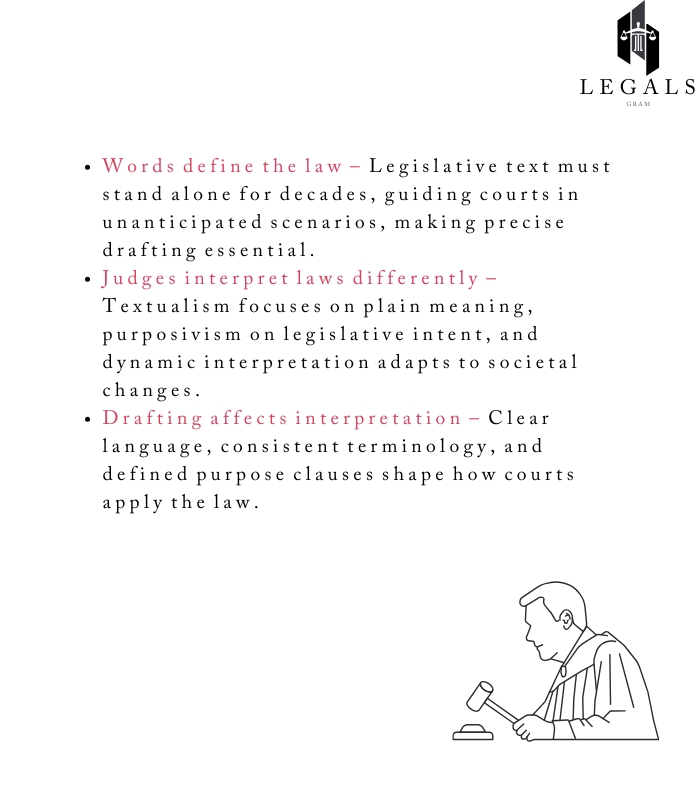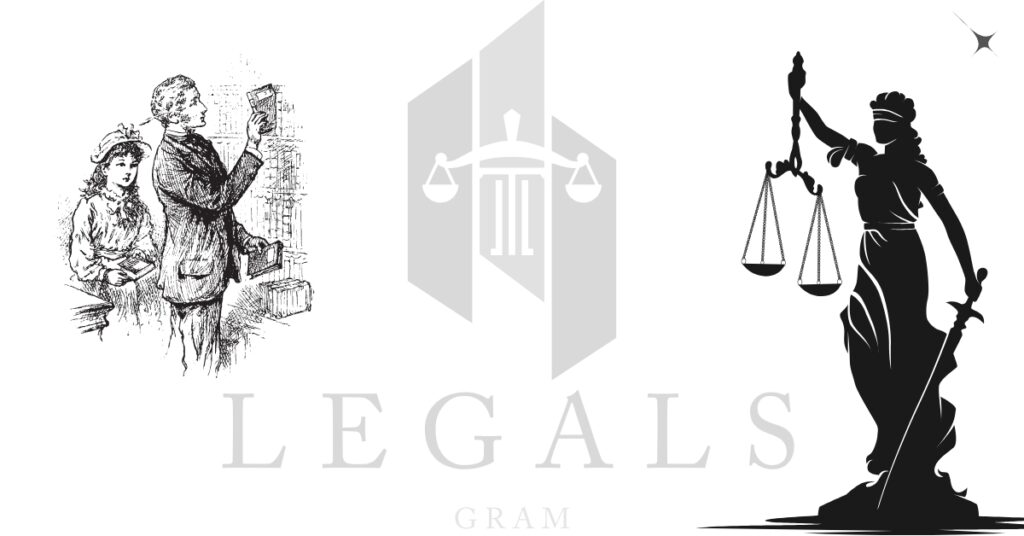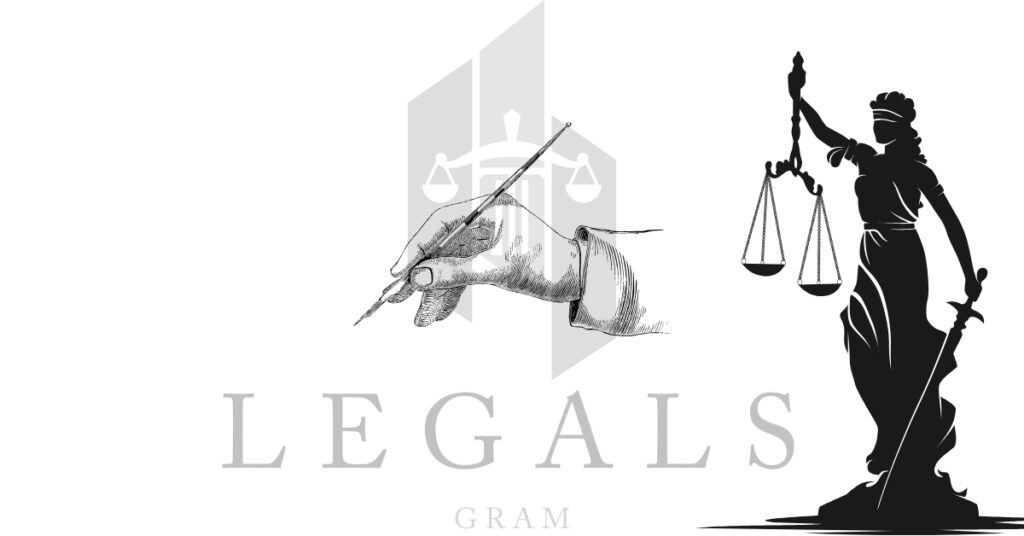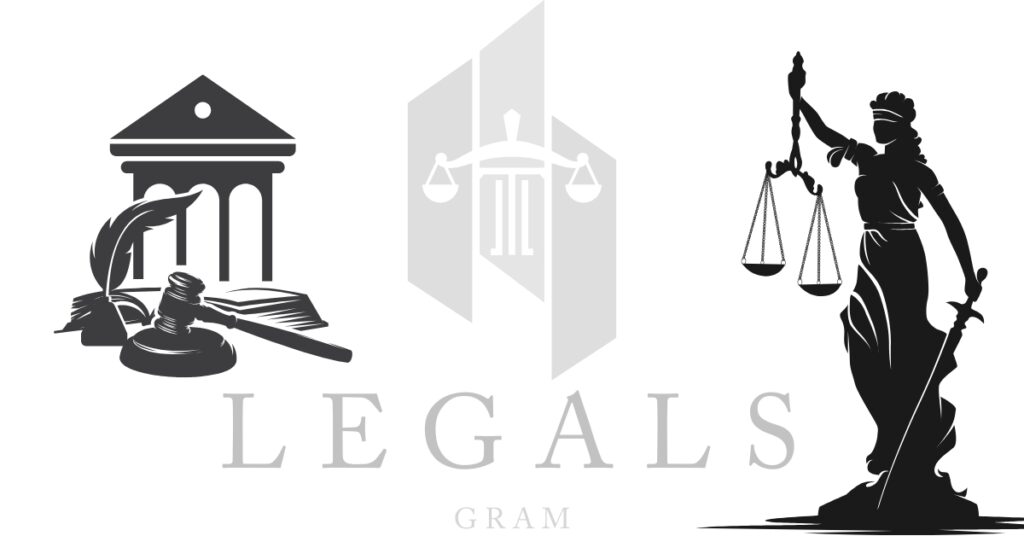Understanding how courts interpret legislation is essential for effective lawmaking. This article explores the relationship between statutory interpretation and legislative drafting, offering insights for legal professionals and policymakers.
When Words Become Law
Perhaps nowhere are words more important than in legislation. The text of a bill must stand alone after it is signed into law, frequently for decades or even centuries, directing courts in an abundance of unanticipated circumstances. Legislative drafting requires an understanding of statutory interpretation because judges’ interpretations of these words have a significant impact on how laws are applied in everyday life.
What Is Statutory Interpretation?
The method by which courts ascertain the meaning and applicability of legislation is known as statutory interpretation. Judges must first determine the true meaning of a statute before applying it to the particular facts of a case.
The stakes are high because various interpretations can produce wildly divergent results in court cases that impact everything from corporate operations and governmental authority to individual rights.
Major Approaches to Statutory Interpretation
When interpreting statutes, judges use a variety of approaches, each of which has unique consequences for those who draft legislation:
Textualism
The main emphasis of textualism is on the statutory text’s common meaning. Textualist judges, such as the late Justice Antonin Scalia, believe that the law is the text passed, not what lawmakers may have meant but did not say.
Effect on drafting: Textualism requires legislative drafters to be clear and precise. Drafters must consider how their language may be interpreted based on its plain meaning because every word counts.
Purposivism
Purposivist interpretation seeks to determine the fundamental goal or purpose of the law by looking beyond its text. In order to ascertain what issue the legislature aimed to solve, judges employing this method may review legislative history, including committee reports and floor discussions.
Effect on the drafting: When purposivism directs interpretation, drafters should make sure the legislative history records the law’s goals and explicitly state them in purpose clauses.
Dynamic Interpretation
Dynamic interpreters take into account how the meaning of a statute may change as society does. This method recognizes that lawmakers cannot foresee every scenario that may arise during the drafting process.
Effect on the drafting: This method encourages drafters to write language that is both true to fundamental ideas and adaptable enough to change with the times.
The Canons of Construction
Statutory interpretation is guided by a variety of interpretive guidelines known as “canons of construction” that have been developed by courts. These consist of:
Textual Canons
- Ordinary meaning: Words are given their common, everyday meaning
- Noscitur a sociis: A word is known by the company it keeps
- Expressio unius: The expression of one thing implies the exclusion of others
Substantive Canons
- Constitutional avoidance: Courts interpret statutes to avoid constitutional problems
- Lenity: Ambiguities in criminal statutes are resolved in favor of defendants
- Federalism canon: Courts presume Congress doesn’t intend to upset the federal-state balance
Effect on drafting: Drafters can anticipate how courts will resolve ambiguities and adjust their drafts accordingly by being aware of these canons. DIY vs Professional Conveyancing: Which Option Is Right for You?

The Legislative Drafter’s Challenge
The difficult job of drafting legislation is to achieve policy goals while producing precise, unambiguous language that can stand up to judicial scrutiny. To draft with interpretation in mind, you must:
1. Precision in Language
Every word in a statute has the potential to have legal meaning. Courts have the authority to examine punctuation, break down words, and examine sentence construction. Drafters have to be extremely careful about the words they use.
2. Consistent Terminology
Courts assume different terms have different meanings, and the same terms have the same meaning throughout a statute. Inconsistent vocabulary can generate unwanted interpretive issues.
3. Definition Sections
Properly constructed definition parts can manage interpretation by defining how key terms should be construed, hence minimising judicial reinterpretation.
4. Balancing Specificity and Flexibility
Over-specificity tends to lead to the creation of loopholes or short-lived legislation. Excessive flexibility runs the risk of an exposition of policymaking to courts. Good drafting strikes a balance that is suitable in all situations.
Best Practices for Legislative Drafting
Given the realities of statutory interpretation, drafters can improve their work by:
1. Anticipating Interpretive Issues
Great drafters think like judges, wondering how varying approaches of interpretation could be used in their language.
2. Creating a Clear Legislative History
Although not all judges follow legislative history, a well-articulated intent may affect the interpretation of some courts.
3. Using Purpose Clauses
One way of clarifying the interpretation of a statute is by stating its purpose and the same principle may be applied when some of its provisions are ambiguous.
4. Seeking Diverse Perspectives
It is possible to modify drafts before enactment to avoid potential subjective problems by receiving comments from people of varied backgrounds and perspectives. Why Precedent and its role in contemporary Legal Drafting matters?
Conclusion: The Ongoing Dialogue
Statutory interpretation is a continuous conversation between the legislature and courts. Both branches shape how the other works – courts using their interpretative methodologies and legislatures using ever-more sophisticated drafting. Legal drafting for different audiences: Judges, Clients, and Opposing Counsel, do you know how?
This relationship is crucial not only for lawyers but for everybody interested in the practice of our laws. The best worded legislation can fail if it does not take into account the way in which its language will be interpreted by the courts, while even mediocre drafting can succeed if it is clear enough for judicial interpretation.
For the lawmakers and their staff, it cannot be purely just theoretical study, it’s a part of actual work – making the law that will be fruitful, abiding its targets, and proving to be right in the test of time.



